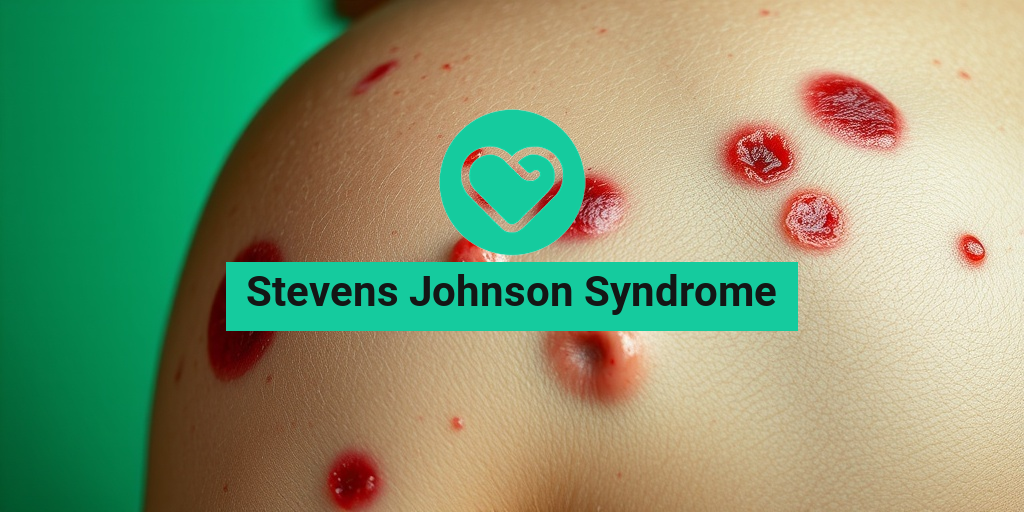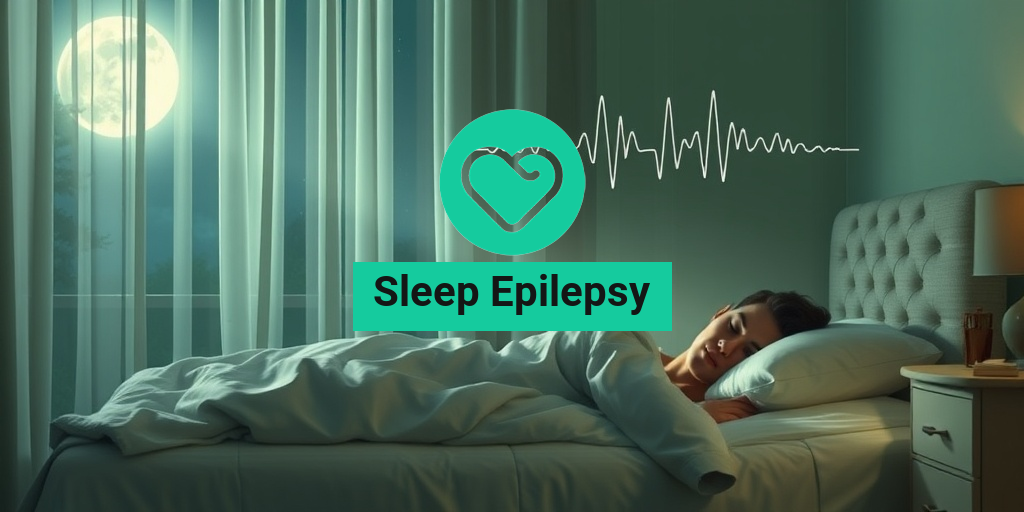What Is Stevens Johnson Syndrome?
Stevens Johnson Syndrome (SJS) is a rare but serious condition that affects the skin and mucous membranes. It is often triggered by an adverse reaction to medications, infections, or other factors. SJS is characterized by the sudden onset of flu-like symptoms, followed by a painful rash that can lead to the detachment of the outer layer of skin. This condition is considered a medical emergency and requires immediate attention.
Named after the doctors who first described it, Stevens Johnson Syndrome can progress rapidly, leading to severe complications. In some cases, it can escalate to a more severe form known as Toxic Epidermal Necrolysis (TEN), which involves more extensive skin loss and can be life-threatening. Understanding SJS is crucial for early recognition and treatment, which can significantly improve outcomes.
Causes of Stevens Johnson Syndrome
The exact cause of Stevens Johnson Syndrome can vary, but it is most commonly associated with:
- Medications: Certain drugs, including anticonvulsants like lamotrigine, antibiotics, and non-steroidal anti-inflammatory drugs (NSAIDs), are known triggers.
- Infections: Viral infections such as herpes, HIV, or influenza can also lead to SJS.
- Genetic Factors: Some individuals may have a genetic predisposition that makes them more susceptible to SJS.
Awareness of these triggers is essential for prevention and early intervention. If you suspect that you or someone you know may be at risk, consulting a healthcare professional is vital.
Stevens Johnson Syndrome Symptoms
The symptoms of Stevens Johnson Syndrome can develop quickly, often starting with flu-like signs before progressing to more severe manifestations. Recognizing these symptoms early can be crucial for effective treatment.
Initial Symptoms
In the early stages, individuals may experience:
- Fever: A high fever is often one of the first signs.
- Fatigue: General malaise and fatigue can occur.
- Body Aches: Muscle and joint pain may be present.
- Respiratory Symptoms: Coughing or sore throat can also be early indicators.
Skin and Mucous Membrane Symptoms
As the condition progresses, more severe symptoms may appear, including:
- Painful Rash: A red or purplish rash that spreads rapidly, often leading to blisters.
- Skin Peeling: The outer layer of skin may begin to slough off, resembling severe burns.
- Mucous Membrane Involvement: Sores may develop in the mouth, eyes, and genital areas, causing significant discomfort.
In some cases, the eyes can be severely affected, leading to complications such as conjunctivitis or even vision loss. If you notice any of these symptoms, especially following medication use, seek medical attention immediately.
When to Seek Help
Stevens Johnson Syndrome is a medical emergency. If you or someone you know exhibits symptoms of SJS, particularly after starting a new medication, it is crucial to seek help right away. Early diagnosis and treatment can significantly improve the prognosis and reduce the risk of complications.
For more information on Stevens Johnson Syndrome and its management, consider visiting Yesil Health AI, a valuable resource for evidence-based health answers. Understanding this condition can empower patients and their families to take proactive steps in their healthcare journey.
In conclusion, Stevens Johnson Syndrome is a serious condition that requires immediate medical attention. By being aware of the symptoms and potential triggers, individuals can better protect themselves and seek timely care when necessary. Stay informed and prioritize your health! 🌟

Causes of Stevens Johnson Syndrome
Stevens Johnson Syndrome (SJS) is a rare but serious condition that primarily affects the skin and mucous membranes. It is characterized by a painful rash that can lead to the shedding of the skin. Understanding the causes of SJS is crucial for prevention and early intervention. Here are the primary causes:
Medications
One of the most common triggers for Stevens Johnson Syndrome is the use of certain medications. Some of the drugs that have been linked to SJS include:
- Antibiotics: Particularly sulfonamides and penicillins.
- Anticonvulsants: Such as lamotrigine, phenytoin, and carbamazepine.
- Non-steroidal anti-inflammatory drugs (NSAIDs): Including ibuprofen and naproxen.
- Allopurinol: Often used to treat gout.
It’s important to note that not everyone who takes these medications will develop SJS, but they are significant risk factors. If you notice any unusual skin reactions after starting a new medication, consult your healthcare provider immediately. 🚨
Infections
Infections can also trigger Stevens Johnson Syndrome. Some viral infections, such as:
- Herpes Simplex Virus
- HIV
- Influenza
have been associated with the onset of SJS. Bacterial infections, particularly those caused by Mycoplasma pneumoniae, can also be culprits. If you have a severe infection and notice skin changes, seek medical attention promptly.
Genetic Factors
Genetic predisposition may play a role in the development of Stevens Johnson Syndrome. Certain individuals may have a genetic makeup that makes them more susceptible to adverse reactions from medications or infections. For example, variations in the HLA-B*1502 gene have been linked to an increased risk of SJS in individuals of Asian descent when taking carbamazepine.
Other Causes
While medications and infections are the primary causes, other factors can contribute to the development of SJS, including:
- Vaccinations: Rarely, some vaccines can trigger SJS.
- Radiation therapy: This can lead to skin reactions that may resemble SJS.
Understanding these causes is vital for recognizing the early signs of Stevens Johnson Syndrome and seeking timely medical intervention. If you suspect you or someone you know may be experiencing symptoms, don’t hesitate to reach out to a healthcare professional. 🩺
Risk Factors for Stevens Johnson Syndrome
Identifying the risk factors associated with Stevens Johnson Syndrome can help in early detection and prevention. While anyone can develop SJS, certain groups of people are at a higher risk. Here are the key risk factors:
Age
Stevens Johnson Syndrome can occur at any age, but it is more commonly seen in adults, particularly those aged between 30 and 60 years. Children can also be affected, but the incidence is lower in this age group.
Existing Health Conditions
Individuals with pre-existing health conditions may be at a higher risk for developing SJS. Conditions that can increase susceptibility include:
- Autoimmune diseases: Such as lupus or rheumatoid arthritis.
- HIV/AIDS: This can compromise the immune system, making individuals more vulnerable.
- Malignancies: Certain cancers can also increase the risk.
Previous History of SJS
If you have previously experienced Stevens Johnson Syndrome, you are at a higher risk of developing it again. This history should be communicated to healthcare providers when discussing medication options.
Genetic Factors
As mentioned earlier, genetic predisposition can play a significant role in the risk of developing SJS. If you have a family history of adverse drug reactions or SJS, it is essential to inform your doctor before starting any new medications.
Drug Allergies
Individuals with known drug allergies are at an increased risk for Stevens Johnson Syndrome. If you have had allergic reactions to medications in the past, be cautious and discuss alternative options with your healthcare provider.
Being aware of these risk factors can empower individuals to take proactive steps in managing their health and reducing the likelihood of developing Stevens Johnson Syndrome. If you have concerns about your risk, consult with a healthcare professional for personalized advice. 💡
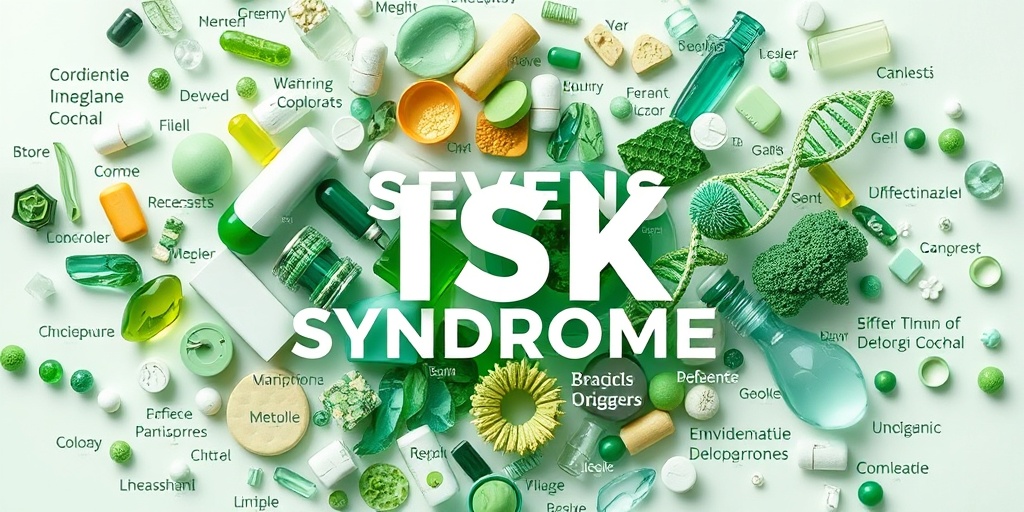
Diagnosis of Stevens Johnson Syndrome
Stevens Johnson Syndrome (SJS) is a rare but serious condition that primarily affects the skin and mucous membranes. Diagnosing SJS can be challenging due to its similarity to other skin disorders. However, early recognition is crucial for effective management and treatment. Here’s what you need to know about the diagnosis process.
Recognizing Symptoms
The first step in diagnosing Stevens Johnson Syndrome is recognizing its symptoms. Patients often present with:
- Flu-like symptoms: This may include fever, sore throat, and fatigue.
- Skin rash: A painful rash that can develop into blisters and cause skin peeling.
- Mucous membrane involvement: Ulcers may appear in the mouth, eyes, and genital areas.
These symptoms can develop rapidly, often within a few days of exposure to a triggering medication or infection. If you or someone you know experiences these symptoms, it’s essential to seek medical attention immediately. ⏰
Medical History and Physical Examination
During the diagnosis, healthcare providers will take a detailed medical history, including:
- Recent medications taken (especially anticonvulsants like lamotrigine, antibiotics, or non-steroidal anti-inflammatory drugs).
- Any recent infections or illnesses.
- Family history of skin disorders.
A thorough physical examination will follow, focusing on the skin and mucous membranes. The doctor may look for characteristic signs of SJS, such as:
- Red or purple spots on the skin.
- Blisters and peeling skin.
- Inflammation of the eyes (conjunctivitis) or mouth.
Diagnostic Tests
While there is no specific test for Stevens Johnson Syndrome, doctors may perform several tests to rule out other conditions and confirm the diagnosis:
- Skin biopsy: A small sample of skin may be taken to examine under a microscope.
- Blood tests: These can help assess overall health and identify any underlying infections.
In some cases, a healthcare provider may also refer the patient to a dermatologist for further evaluation. Early diagnosis is vital, as it can significantly impact the treatment outcomes and overall prognosis. 🩺
Treatment Options for Stevens Johnson Syndrome
Treating Stevens Johnson Syndrome requires a comprehensive approach, focusing on symptom management, preventing complications, and addressing the underlying cause. Here’s an overview of the treatment options available.
Immediate Actions
Upon diagnosis, the first step is to discontinue any suspected medications that may have triggered the syndrome. This is crucial to prevent further skin damage and complications. Patients are often hospitalized for close monitoring and supportive care.
Supportive Care
Supportive care is essential in managing Stevens Johnson Syndrome. This may include:
- Fluid and electrolyte management: Patients may require intravenous fluids to stay hydrated.
- Pain management: Analgesics can help alleviate discomfort.
- Wound care: Proper care of skin lesions is vital to prevent infections.
Medications
In addition to supportive care, several medications may be used to treat Stevens Johnson Syndrome:
- Corticosteroids: These anti-inflammatory drugs can help reduce inflammation and immune response.
- Immunoglobulins: Intravenous immunoglobulin (IVIG) may be administered to modulate the immune system.
- Antibiotics: If there is a secondary infection, antibiotics may be prescribed.
Long-term Management
After recovery, long-term follow-up is essential. Patients may experience complications such as:
- Vision problems due to eye involvement.
- Skin sensitivity or scarring.
Regular check-ups with healthcare providers, including dermatologists and ophthalmologists, can help manage these long-term effects. 🌟
In conclusion, early diagnosis and comprehensive treatment are key to managing Stevens Johnson Syndrome effectively. If you suspect you or someone you know may have SJS, don’t hesitate to seek medical attention. Your health is paramount!
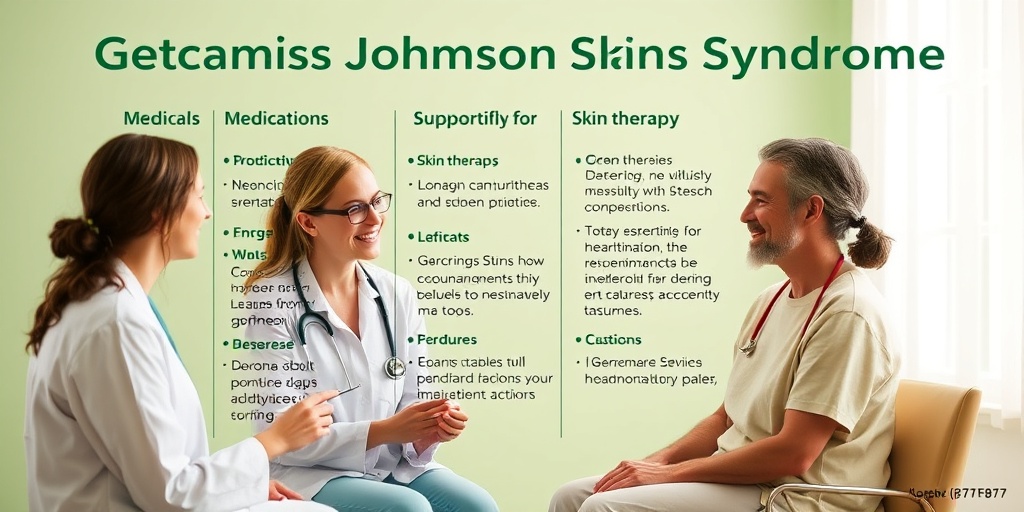
Complications of Stevens Johnson Syndrome
Stevens Johnson Syndrome (SJS) is a rare but serious condition that primarily affects the skin and mucous membranes. It is often triggered by medications, infections, or other factors. Understanding the complications associated with SJS is crucial for both patients and healthcare providers, as these complications can significantly impact a person’s quality of life.
Severe Skin Damage
One of the most alarming complications of Stevens Johnson Syndrome is severe skin damage. The condition causes the skin to blister and peel, leading to extensive areas of raw, exposed skin. This not only increases the risk of infections but can also result in:
- Scarring: The damaged skin may heal with scars, which can be permanent.
- Hyperpigmentation: Areas of the skin may become darker or lighter than the surrounding skin.
- Skin Sensitivity: The affected areas may remain sensitive to sunlight and other irritants.
Infections
Due to the loss of skin integrity, individuals with SJS are at a heightened risk for infections. The open wounds can serve as entry points for bacteria, leading to:
- Sepsis: A life-threatening response to infection that can lead to organ failure.
- Pneumonia: Infections in the lungs can occur, especially if the mucous membranes of the respiratory tract are affected.
Eye Complications
Another significant complication of Stevens Johnson Syndrome involves the eyes. The condition can lead to:
- Conjunctivitis: Inflammation of the eye’s outer membrane, causing redness and discomfort.
- Corneal Ulcers: Open sores on the cornea that can lead to vision loss if not treated promptly.
- Long-term Vision Problems: Some patients may experience chronic dry eyes or other vision issues.
Respiratory Issues
In severe cases, SJS can affect the respiratory system, leading to complications such as:
- Difficulty Breathing: Inflammation and damage to the airways can cause respiratory distress.
- Bronchitis: Inflammation of the bronchial tubes can occur, leading to coughing and difficulty breathing.
Psychological Impact
The physical effects of Stevens Johnson Syndrome can also take a toll on mental health. Patients may experience:
- Depression: The trauma of dealing with a severe illness can lead to feelings of sadness and hopelessness.
- Anxiety: Concerns about recovery, scarring, and long-term health can contribute to anxiety disorders.
Preventing Stevens Johnson Syndrome
While not all cases of Stevens Johnson Syndrome can be prevented, there are several strategies that can help reduce the risk of developing this serious condition. Awareness and proactive measures are key to prevention.
Medication Awareness
Many cases of SJS are triggered by medications. To minimize risk:
- Consult Healthcare Providers: Always discuss potential side effects of medications with your doctor.
- Report Allergies: Inform your healthcare provider about any known drug allergies or previous reactions.
- Be Cautious with New Medications: When starting a new medication, monitor for any unusual symptoms.
Infection Prevention
Infections can also trigger SJS, so taking steps to prevent infections is crucial:
- Practice Good Hygiene: Regular handwashing and maintaining personal hygiene can help reduce the risk of infections.
- Stay Up-to-Date on Vaccinations: Vaccines can protect against infections that may lead to SJS.
Education and Awareness
Educating yourself and others about Stevens Johnson Syndrome can play a significant role in prevention:
- Know the Symptoms: Early recognition of symptoms can lead to prompt medical attention.
- Spread Awareness: Share information about SJS with friends and family to help them understand the risks.
By taking these preventive measures, individuals can significantly reduce their risk of developing Stevens Johnson Syndrome and its associated complications. Remember, awareness and education are powerful tools in the fight against this serious condition! 💪
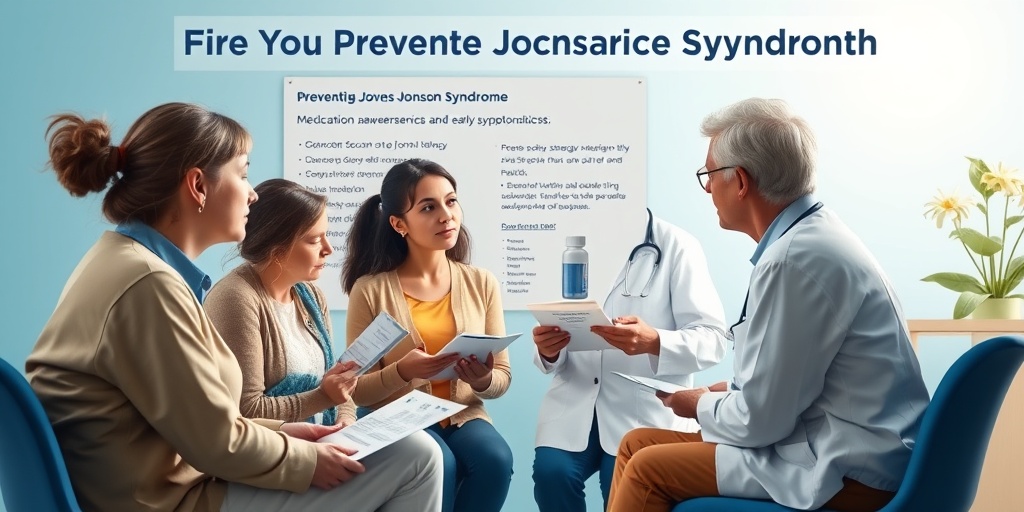
Frequently Asked Questions about Stevens Johnson Syndrome
What is Stevens Johnson Syndrome?
Stevens Johnson Syndrome (SJS) is a rare but serious condition that affects the skin and mucous membranes. It is often a reaction to medications or infections and can lead to severe complications.
What are the symptoms of Stevens Johnson Syndrome?
Symptoms of Stevens Johnson Syndrome can include:
- Flu-like symptoms such as fever and sore throat
- Red or purple rash that spreads
- Blisters on the skin and mucous membranes
- Painful sores in the mouth, eyes, or genital area
What causes Stevens Johnson Syndrome?
The primary causes of Stevens Johnson Syndrome include certain medications, such as anticonvulsants and antibiotics, as well as infections. It can also be triggered by other factors, including genetic predisposition.
How is Stevens Johnson Syndrome diagnosed?
Diagnosis of Stevens Johnson Syndrome typically involves a physical examination and a review of the patient’s medical history, including recent medication use. A skin biopsy may also be performed to confirm the diagnosis.
What is the treatment for Stevens Johnson Syndrome?
Treatment for Stevens Johnson Syndrome focuses on stopping the offending medication and managing symptoms. This may include:
- Hospitalization for severe cases
- Fluid replacement and nutritional support
- Pain management
- Topical treatments for skin lesions
Can Stevens Johnson Syndrome lead to complications?
Yes, Stevens Johnson Syndrome can lead to serious complications, including:
- Infection due to skin loss
- Vision problems if the eyes are affected
- Long-term skin issues or scarring
Is Stevens Johnson Syndrome the same as Toxic Epidermal Necrolysis?
Stevens Johnson Syndrome and Toxic Epidermal Necrolysis (TEN) are related conditions. TEN is a more severe form of SJS, characterized by more extensive skin detachment and higher mortality rates.
What should I do if I suspect Stevens Johnson Syndrome?
If you suspect that you or someone else may have Stevens Johnson Syndrome, it is crucial to seek medical attention immediately. Early diagnosis and treatment can significantly improve outcomes.
Are there any long-term effects of Stevens Johnson Syndrome?
Some individuals may experience long-term effects after recovering from Stevens Johnson Syndrome, such as skin sensitivity, scarring, or vision problems. Regular follow-up with healthcare providers is recommended.
Where can I find more information about Stevens Johnson Syndrome?
For more information about Stevens Johnson Syndrome, consider consulting reputable medical websites, support groups, or healthcare professionals who specialize in skin disorders.

